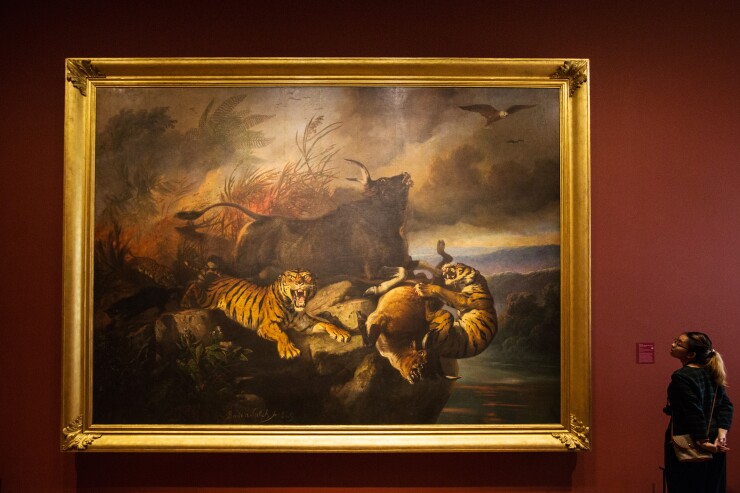The art market is booming and investors are jumping in. The global art industry recorded $63.7 billion dollars in sales last year, a 12% increase from 2017, according to the 2018 TEFAF Art Market report. The art market is now growing faster than both corporate bond yields and small-cap U.S. companies.
What does that mean for clients? While we may be living in a golden age of art, potential clients looking to invest in alternative investments are spooked by the art industry’s lack of regulation and the risks of fraud. (Is that Banksy really a Banksy?)
Blockchain may provide an answer.
Adopting blockchain technology offers the art industry an opportunity to ameliorate the drawbacks of its opacity while retaining the benefits of an unregulated structure. As fine art matures into a formidable asset class, it is imperative for advisors to understand how new technologies are updating the art industry, and more specifically, how blockchain can protect their clients from future frauds.
Despite this promising future, a lack of regulation — one of the most distinct and unique characteristics of the industry — threatens to undermine art’s steady march towards maturation as an asset class.

Blockchain, originally devised for the digital currency bitcoin, acts as a public digital ledger of economic transactions. The technology operates through a decentralized system, independent from the control of any single person, company or government. The benefits of blockchain are not limited to cryptocurrencies: It can function well in the art market.
Currently, the art world’s lack of an adequate regulatory structure fosters a system of opaque exchange that is prone to abuse. Fraud and price manipulation are particularly endemic in the art industry, deterring many potential investors from entering the market and ultimately stunting art’s growth into a formidable asset class.
Much of the world's most valuable art has traded hands, often anonymously, for decades, if not centuries. Proof of provenance, therefore, is often excluded or limited to a single — easy to lose — piece of paper. The result of these opaque exchanges is a marketplace that lacks the information needed to verify authenticity with absolute certainty, enabling criminals to sell forged works to unsuspecting buyers.
-
So-called stable coins may be the “key to unlocking widespread adoption,” a virtual currency founder says.
February 21 -
Distributed ledger technology is expected to provide advisors with more transparency in a variety of transactions.
February 8 -
Large wealth managers and banks will spend more on blockchain and AI in the coming year, and appear willing to explore new technology partnerships.
December 27
Blockchain can substantially reduce instances of fraud by providing a transparent chain of custody for individual paintings. Blockchain can produce a verifiable digital identity for artworks that would be retained throughout all transactions. Since all relevant information pertaining to an artwork will be easily accessible, the sale of stolen or forged material would be extremely difficult. Companies such as 4Artechnologies have already started to deploy blockchain in this way, offering services that can log an artwork’s unique fingerprint, history and provenance on the blockchain.
Another problem of the art industry’s unregulated structure is a lack of product information. That can cause buyers to routinely misunderstand their investment risks. These information asymmetries will only increase as art becomes more accessible through fractional ownership platforms and other wealth management strategies.
Blockchain, however, can ameliorate these issues by allowing stakeholders to better assess the risks and rewards of investing in art. Access to an artwork’s relevant data points — transaction costs and artist/appraiser background — can enable investors to create more reliable valuation metrics and models for individual artworks. As a result, firms that sell the tokenization of art, such as Rally Road and Arthena, will become more credible.
Ultimately, blockchain technology offers the art industry a unique opportunity. It has the potential to serve as a panacea for an industry that is ailing from a lack of regulation. Detractors might argue that art will become a common alternative investment regardless of the adoption of blockchain technology. If true, professionals and investors alike will increasingly have to navigate the murky waters of the art world. The benefit of using blockchain, however, is to ensure that art’s transition to an asset is done in a way that is efficient, safe and lucrative for all involved.





